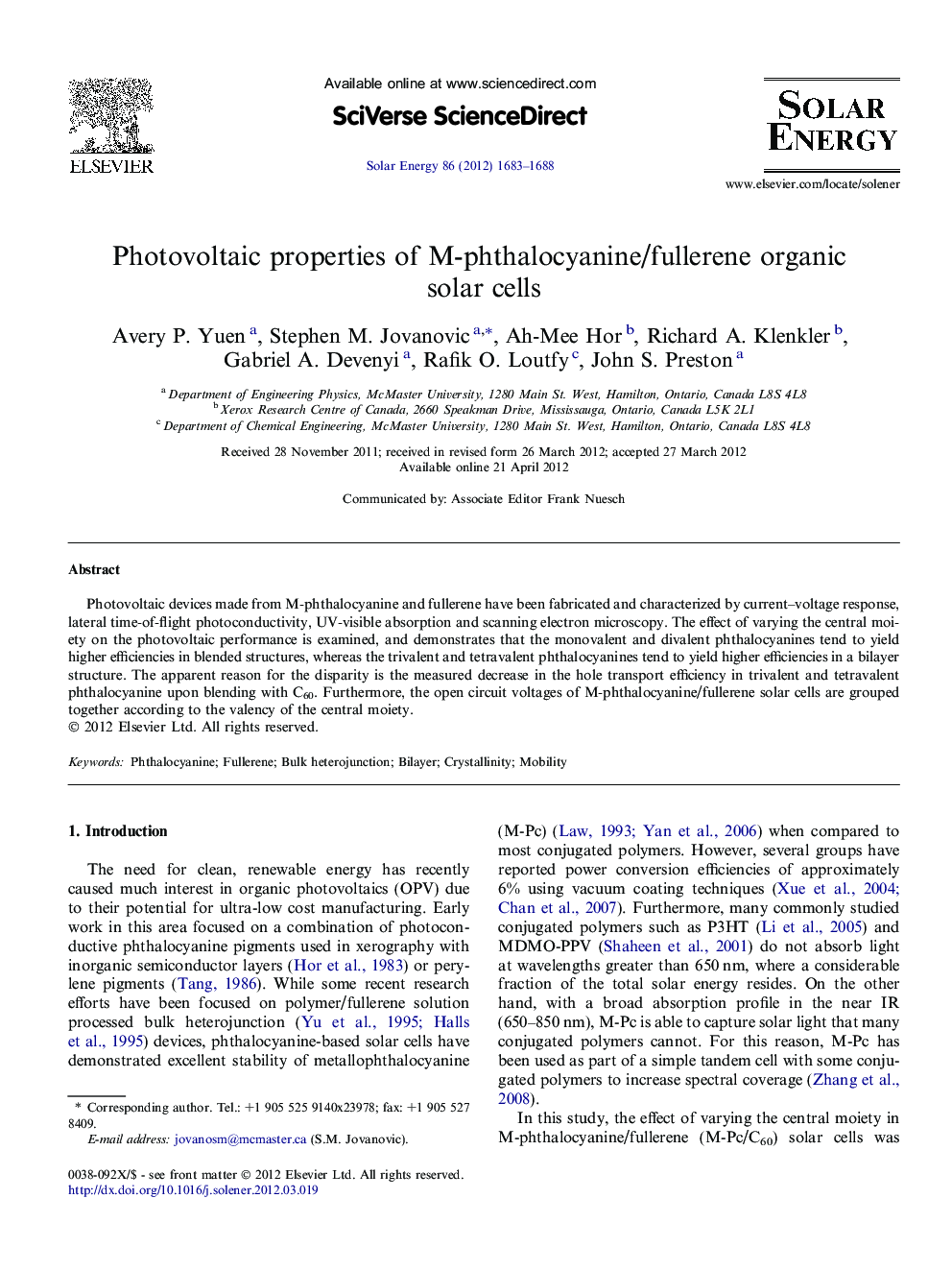| Article ID | Journal | Published Year | Pages | File Type |
|---|---|---|---|---|
| 1550830 | Solar Energy | 2012 | 6 Pages |
Photovoltaic devices made from M-phthalocyanine and fullerene have been fabricated and characterized by current–voltage response, lateral time-of-flight photoconductivity, UV-visible absorption and scanning electron microscopy. The effect of varying the central moiety on the photovoltaic performance is examined, and demonstrates that the monovalent and divalent phthalocyanines tend to yield higher efficiencies in blended structures, whereas the trivalent and tetravalent phthalocyanines tend to yield higher efficiencies in a bilayer structure. The apparent reason for the disparity is the measured decrease in the hole transport efficiency in trivalent and tetravalent phthalocyanine upon blending with C60. Furthermore, the open circuit voltages of M-phthalocyanine/fullerene solar cells are grouped together according to the valency of the central moiety.
► M-phthalocyanine/fullerene devices in blended and bilayer structures. ► Blended monovalent and divalent M-Pc/C60 has improved exciton separation. ► Blended trivalent and tetravalent M-Pc/C60 has reduced hole transport efficiency. ► Grouping of device Voc by valency of central moiety.
